CHAPTER 6: THE IS-LM MODEL IN AN OPEN
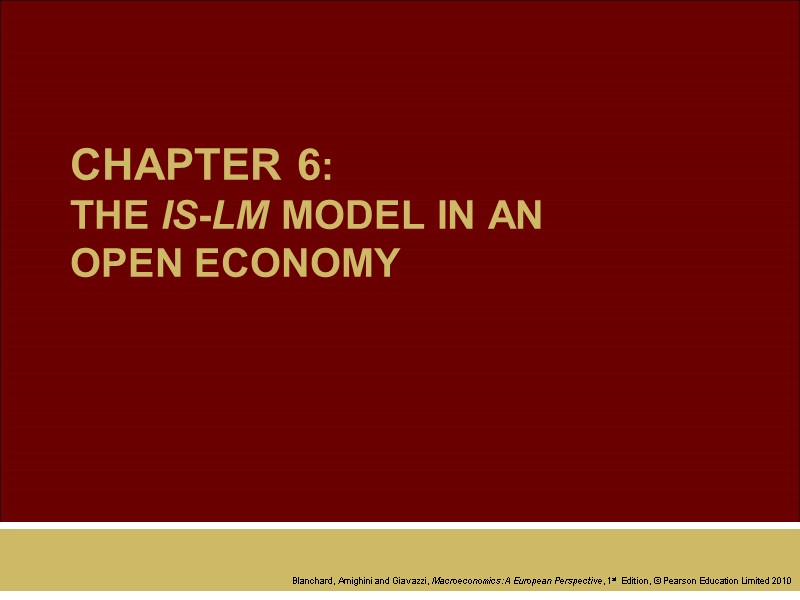

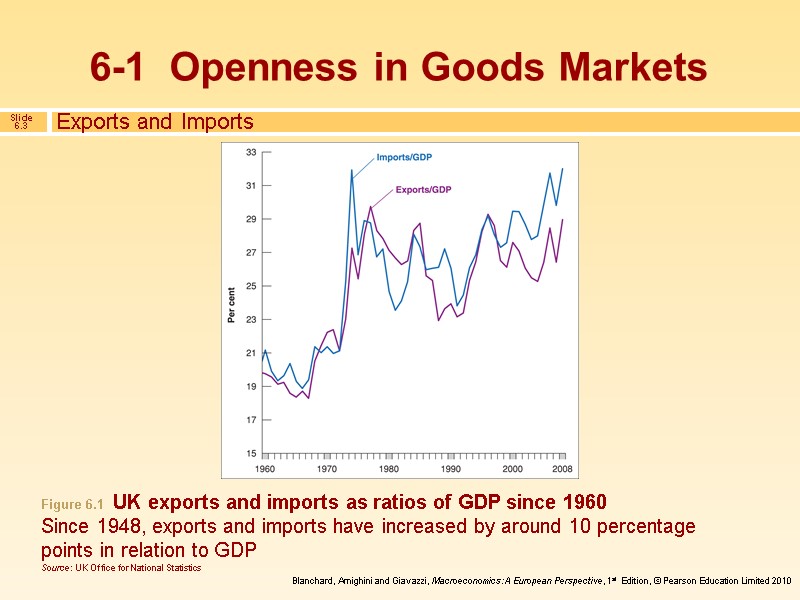
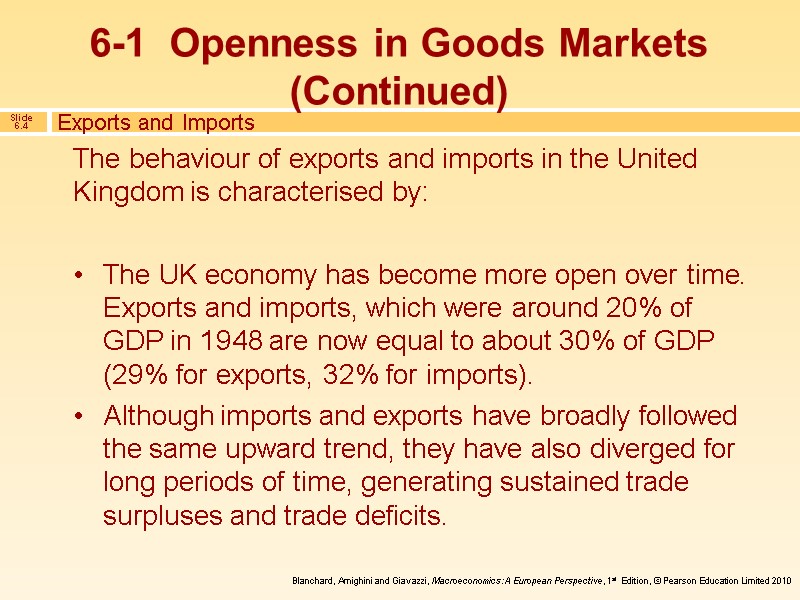
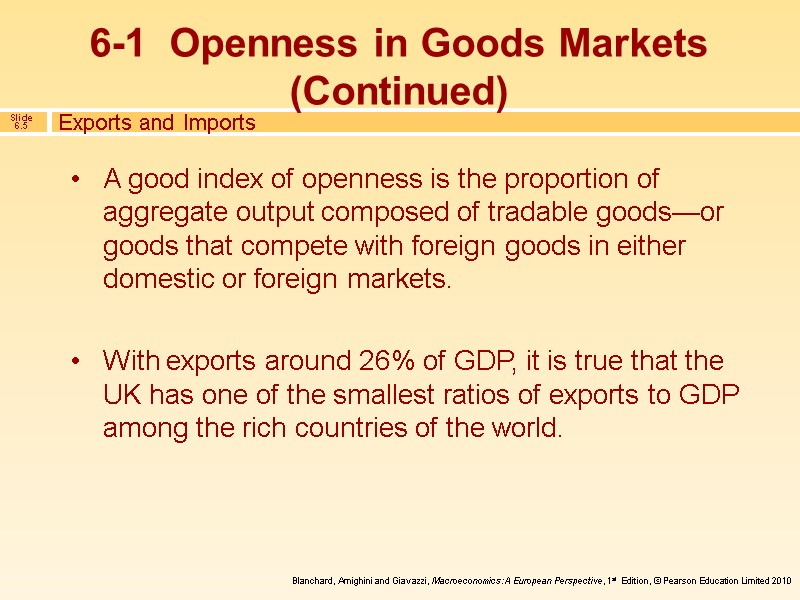
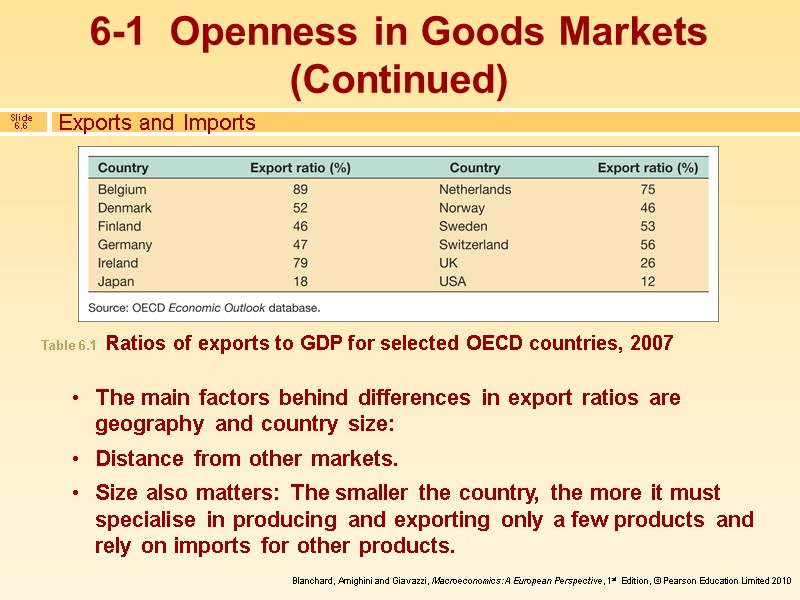
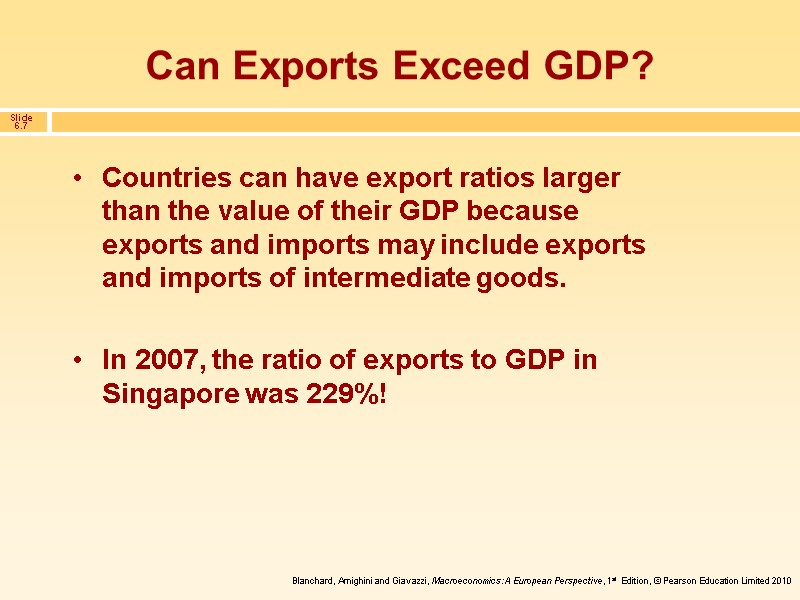
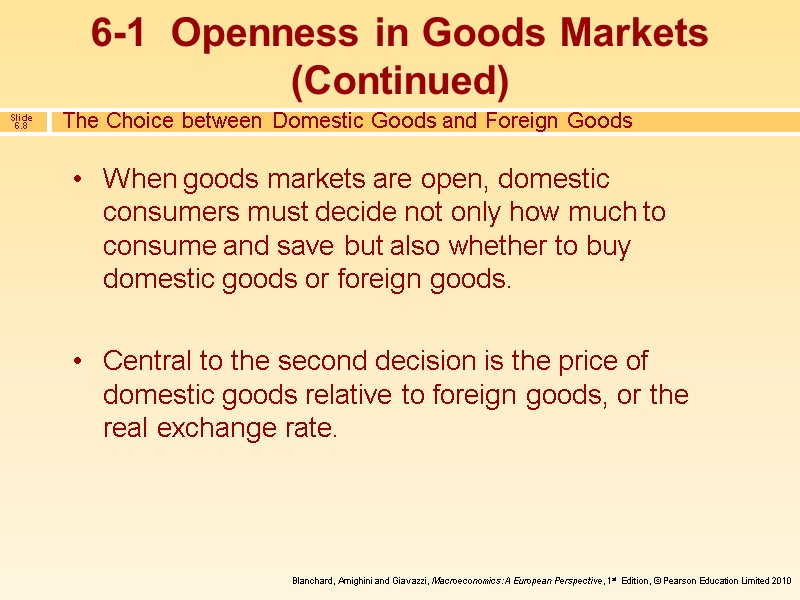
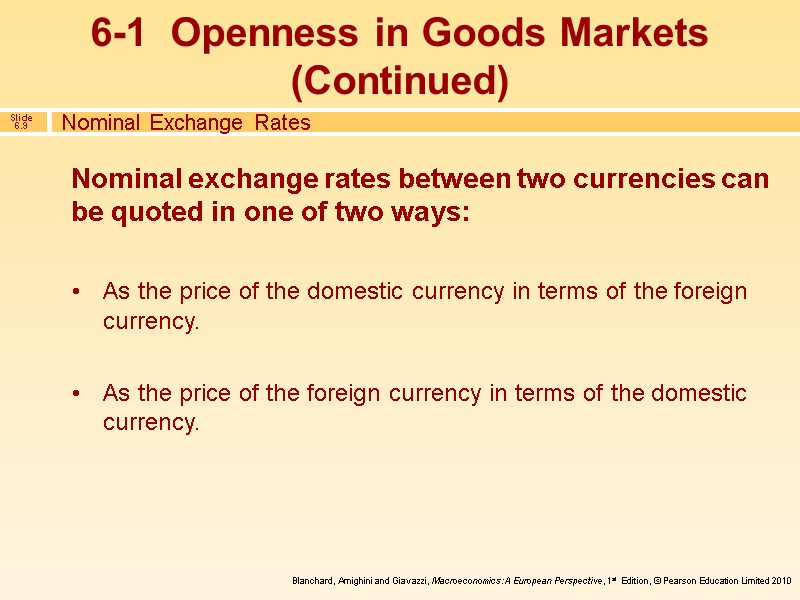
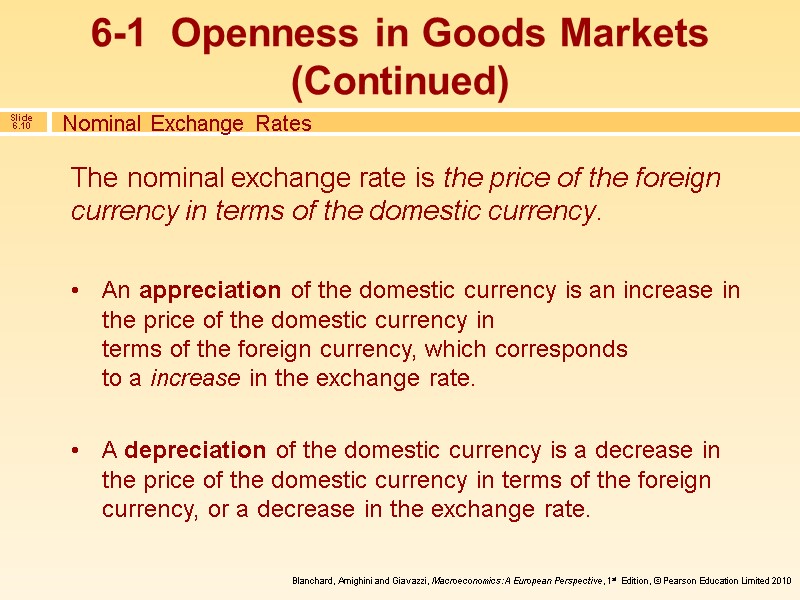
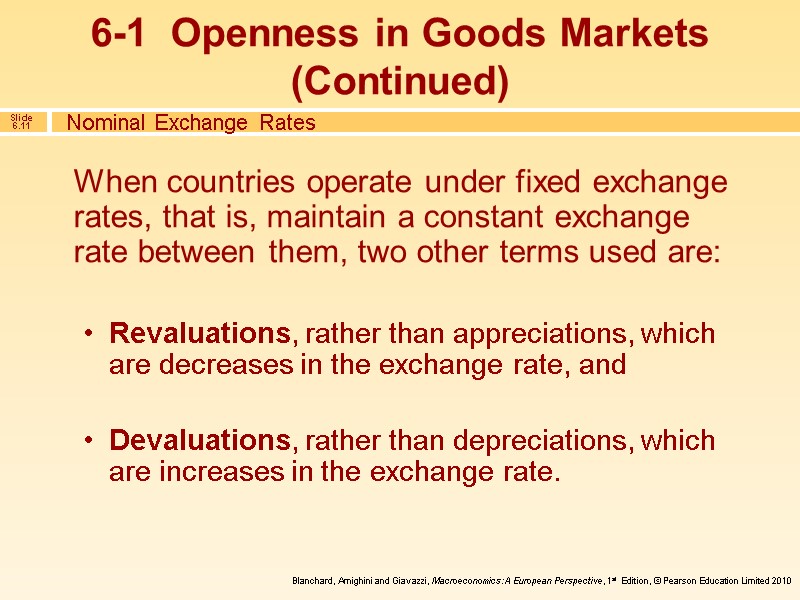
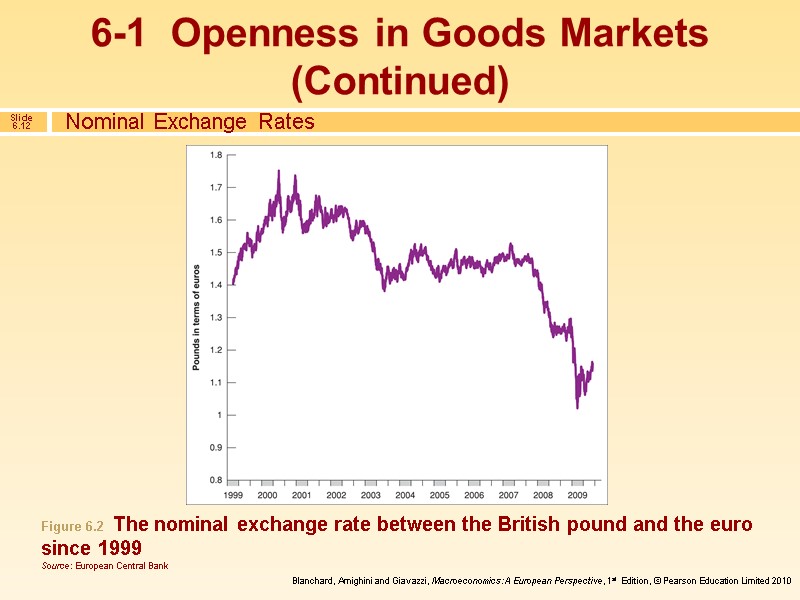
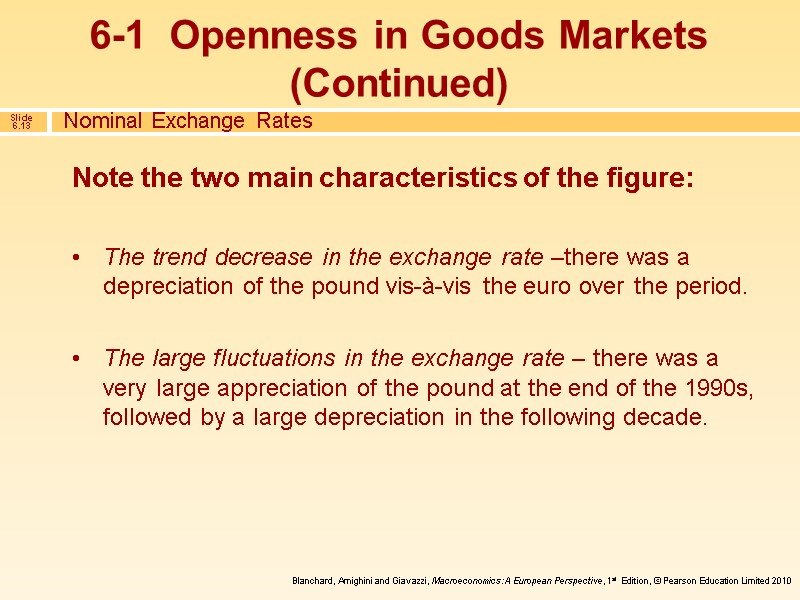
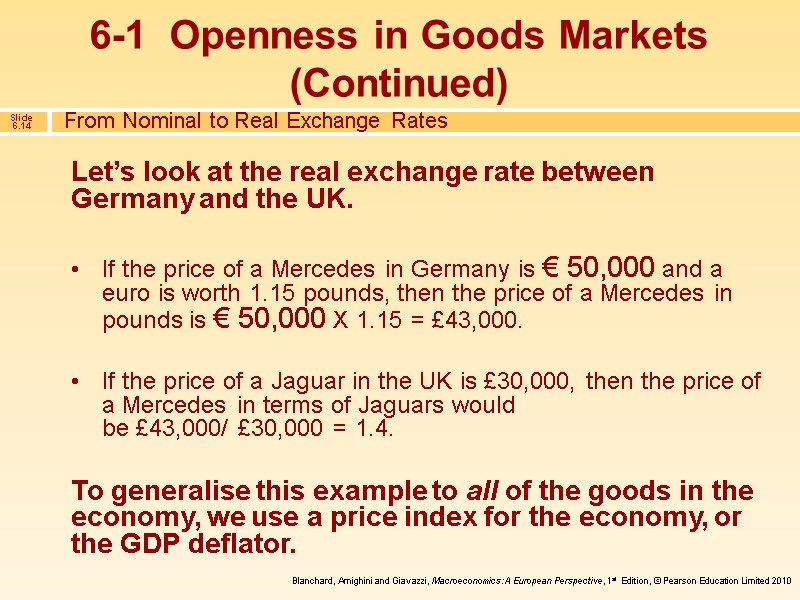
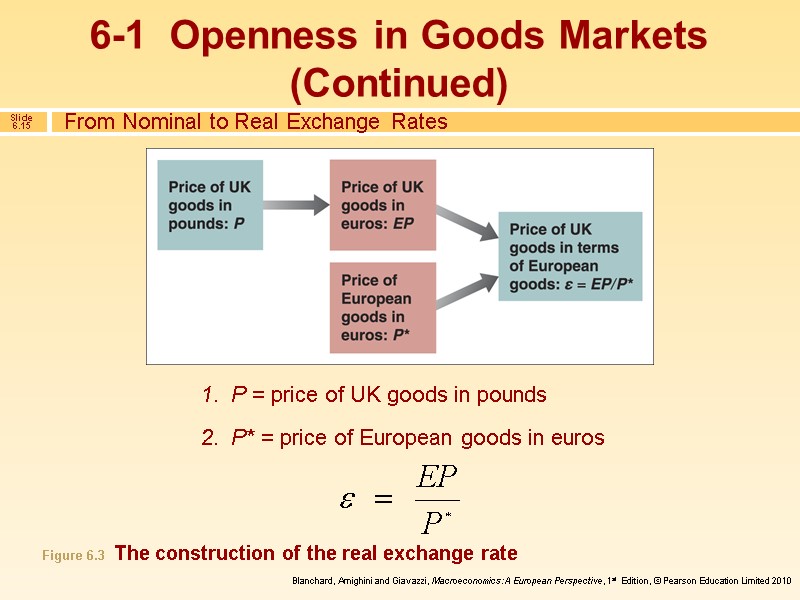
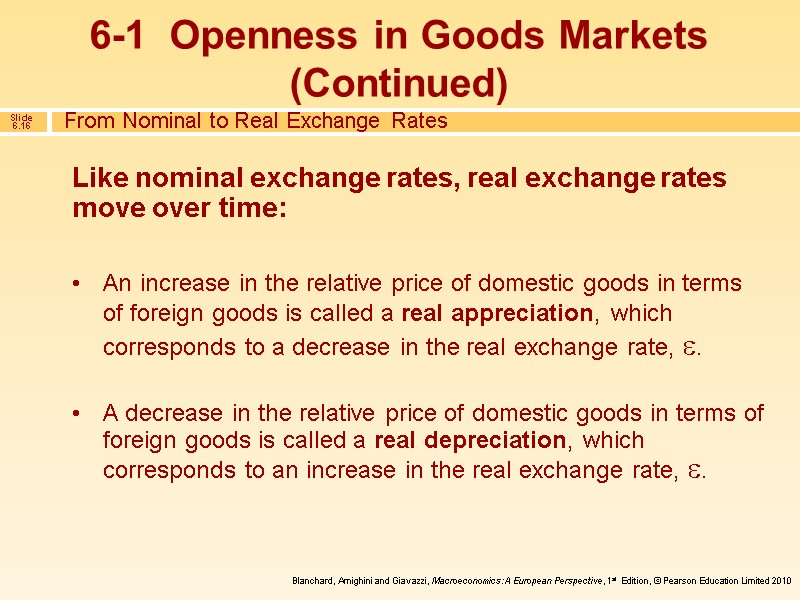
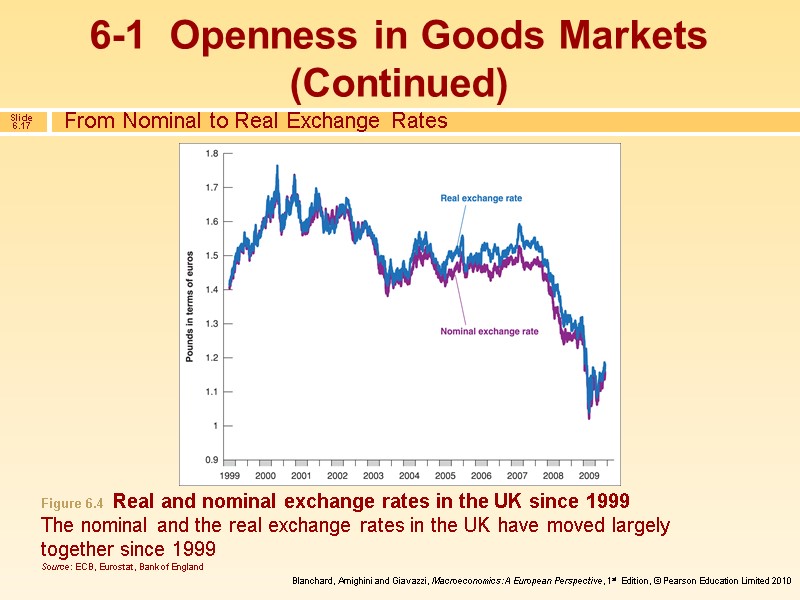
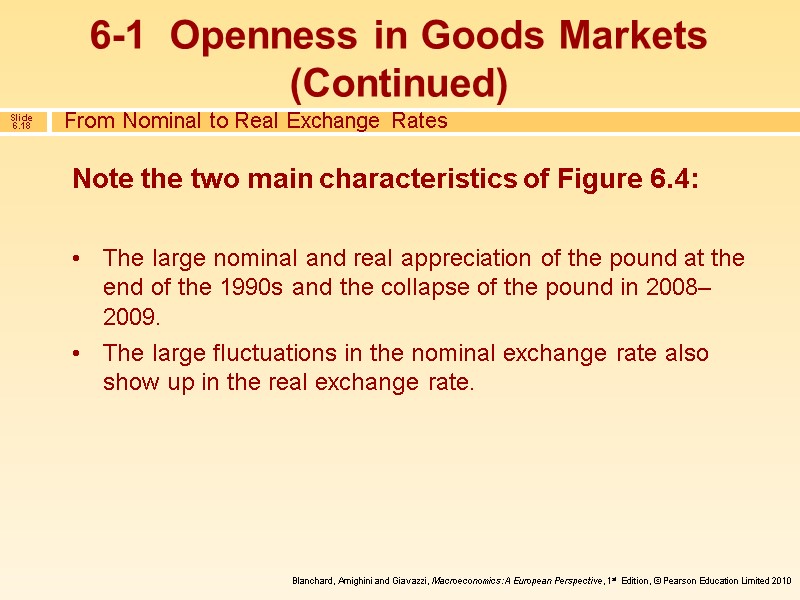
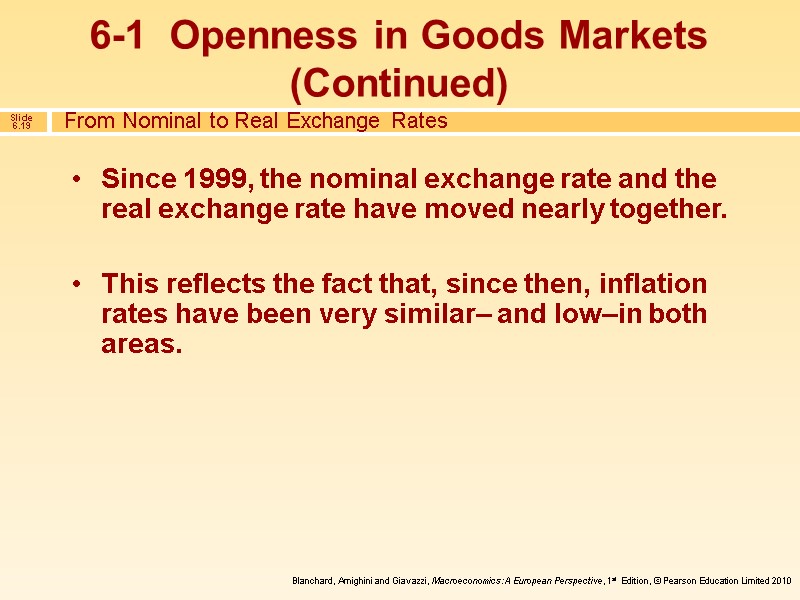
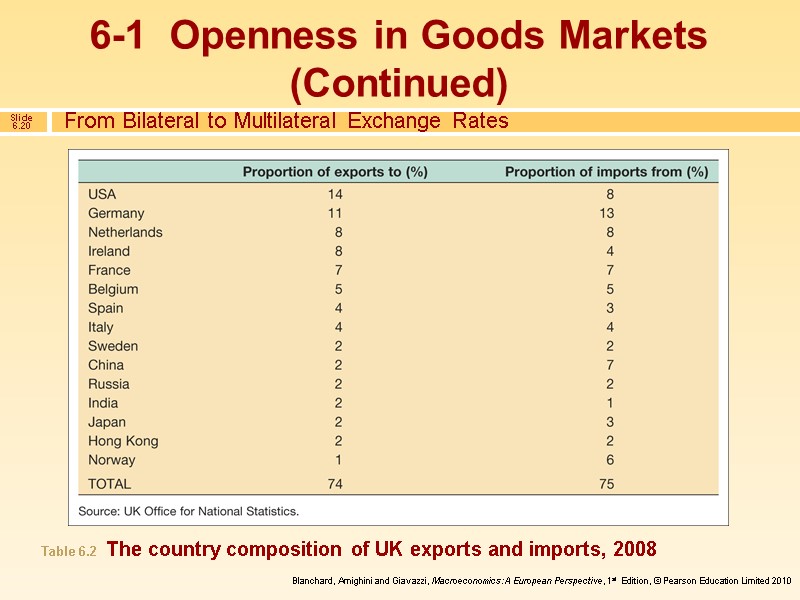
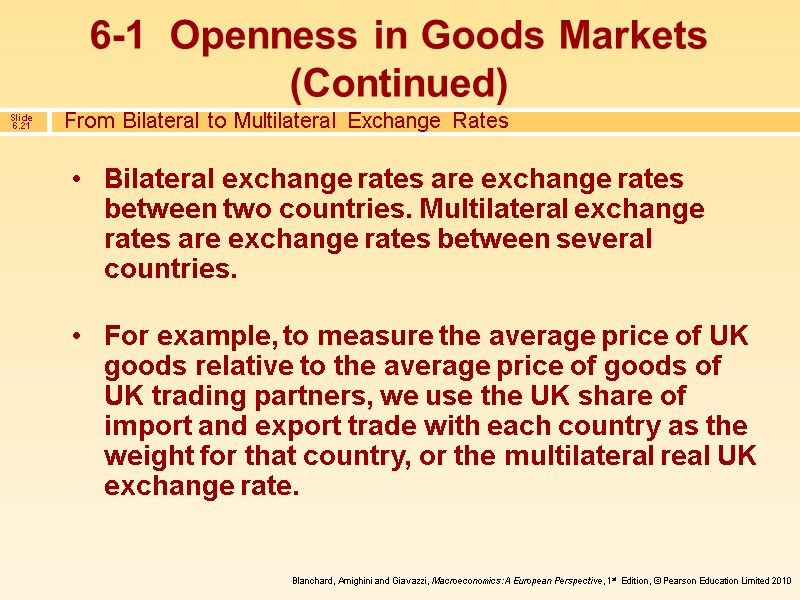
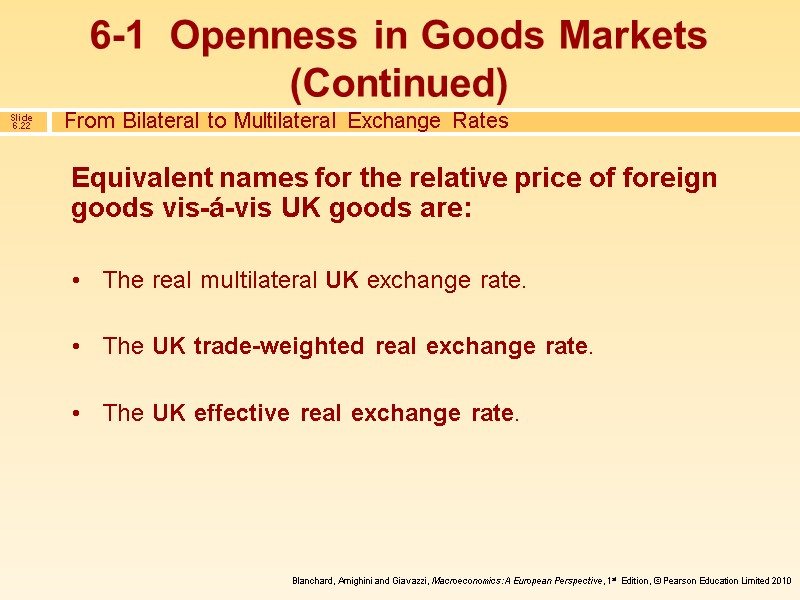
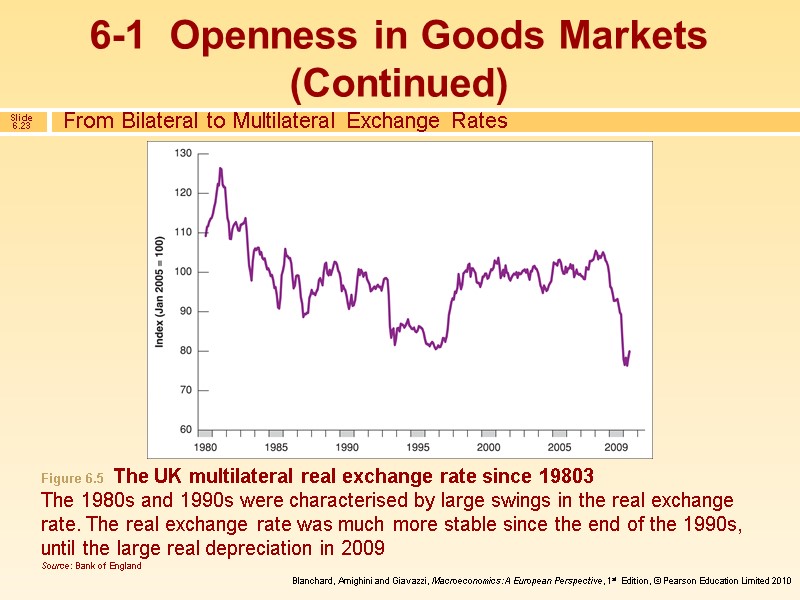
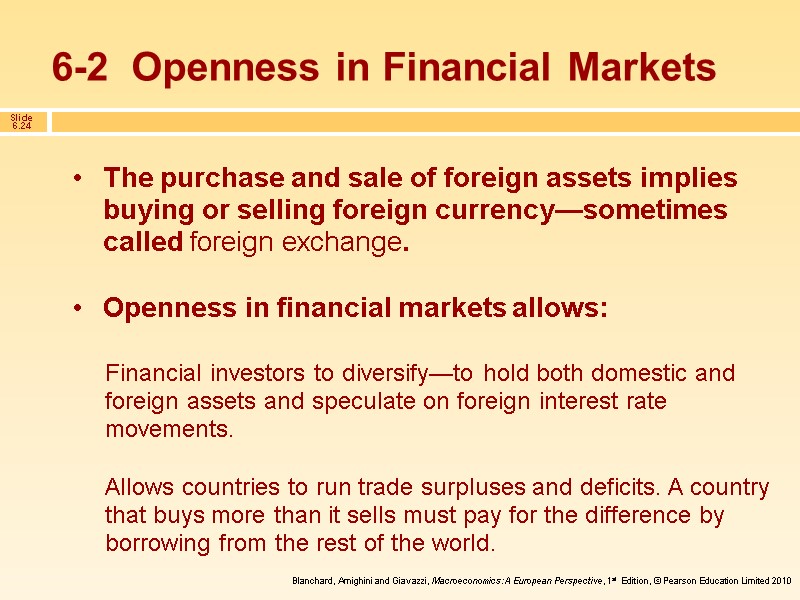
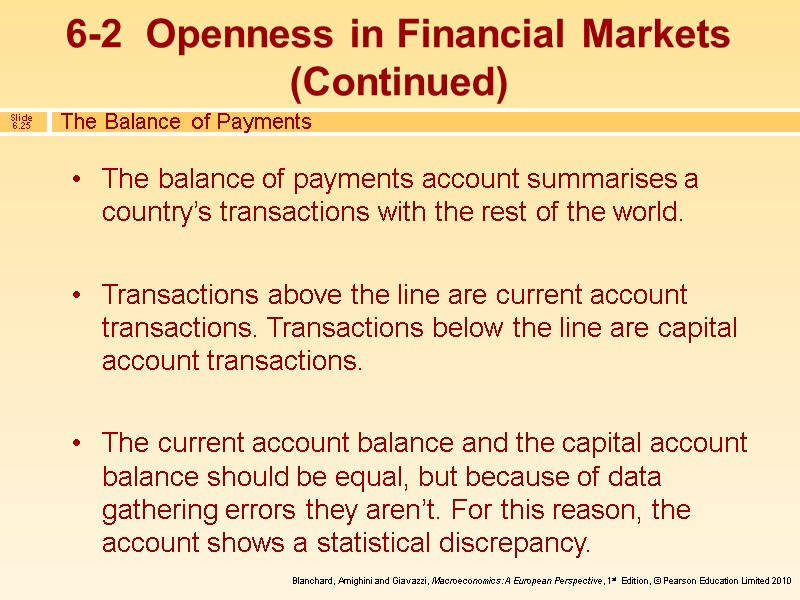
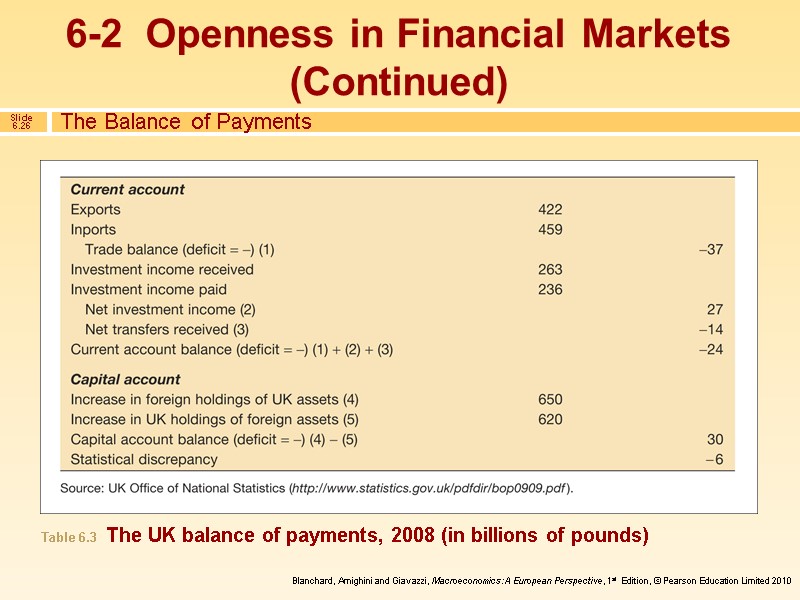
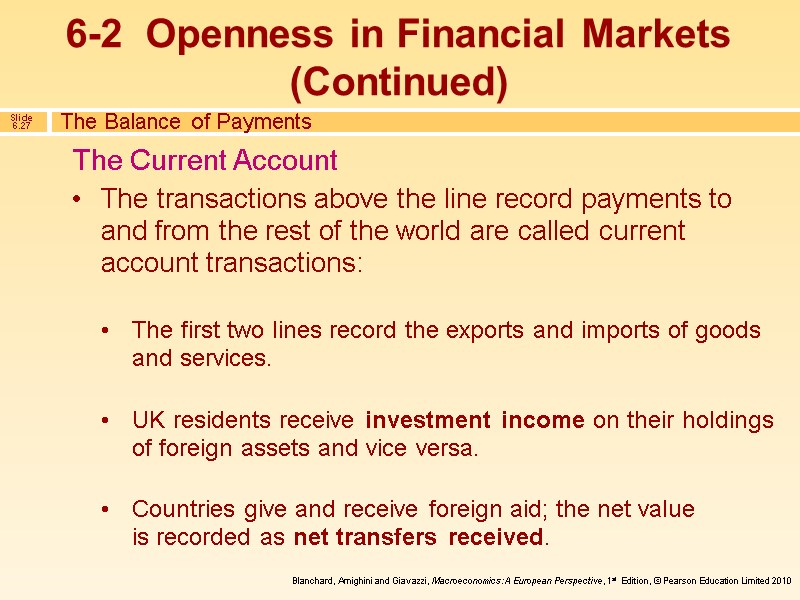
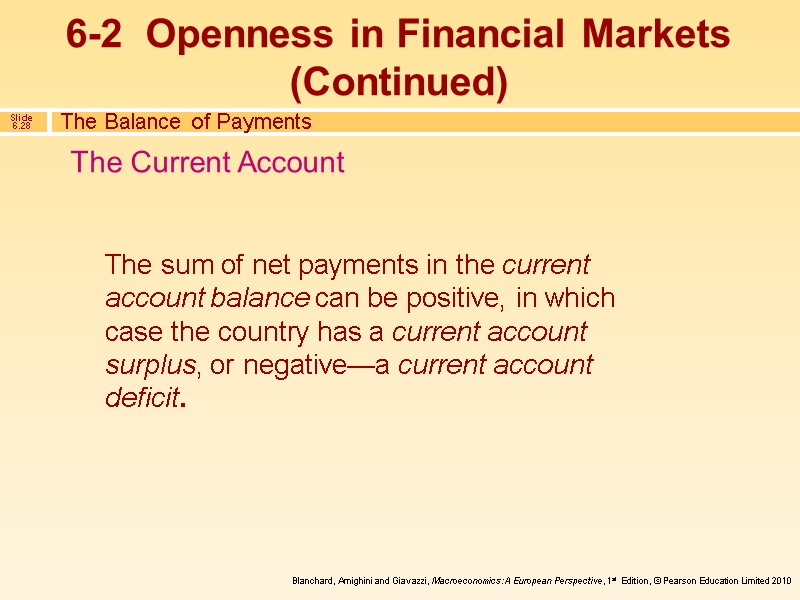
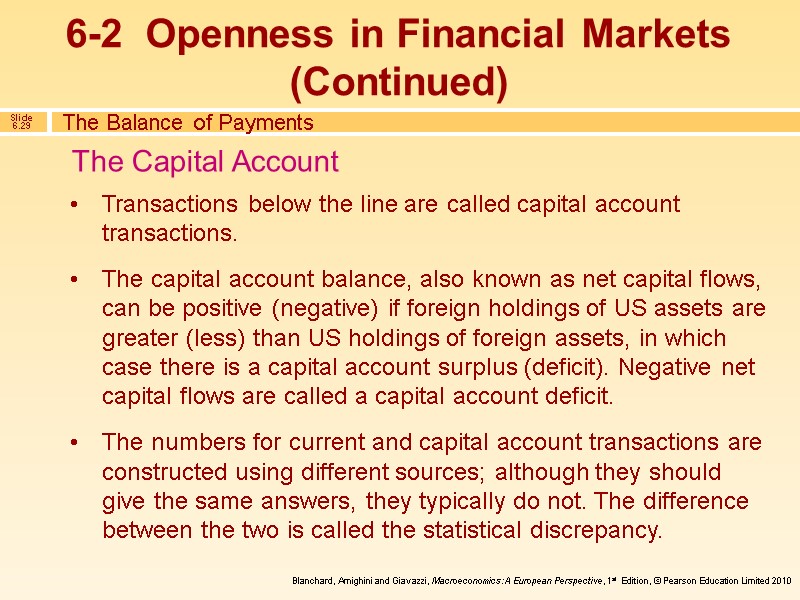
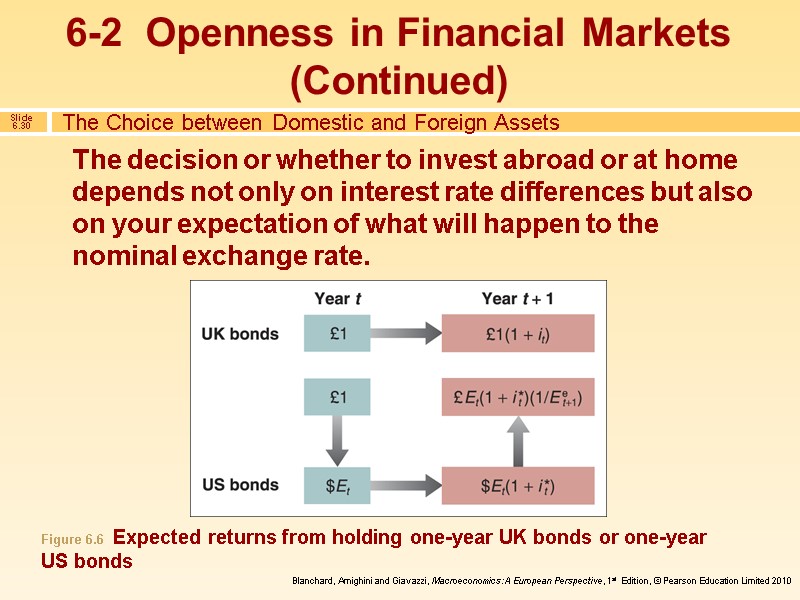
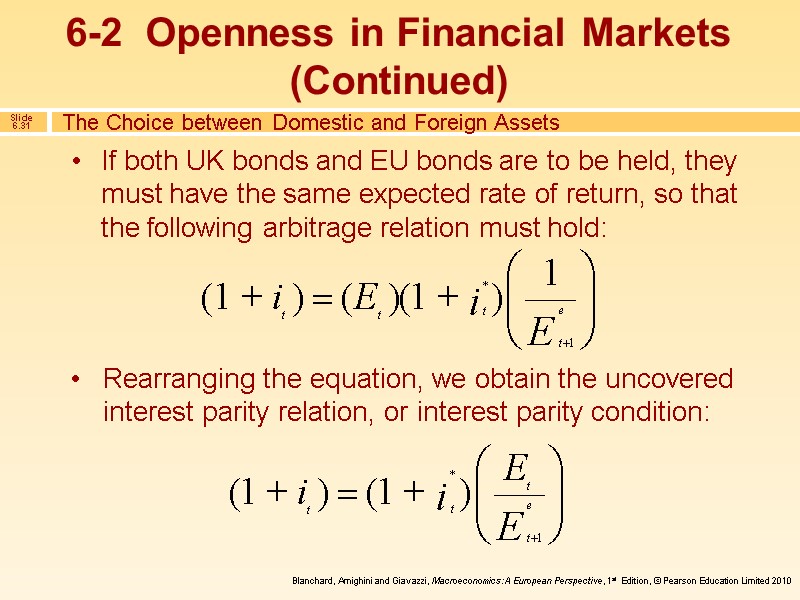
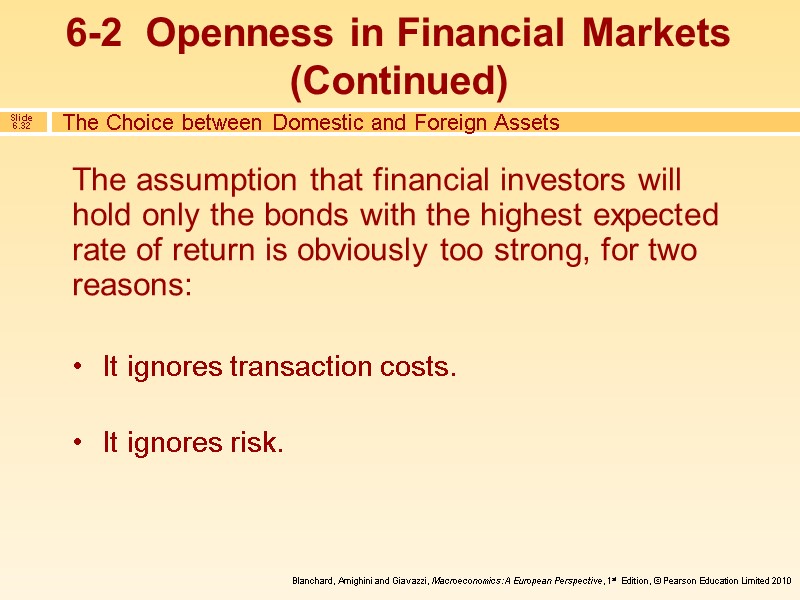
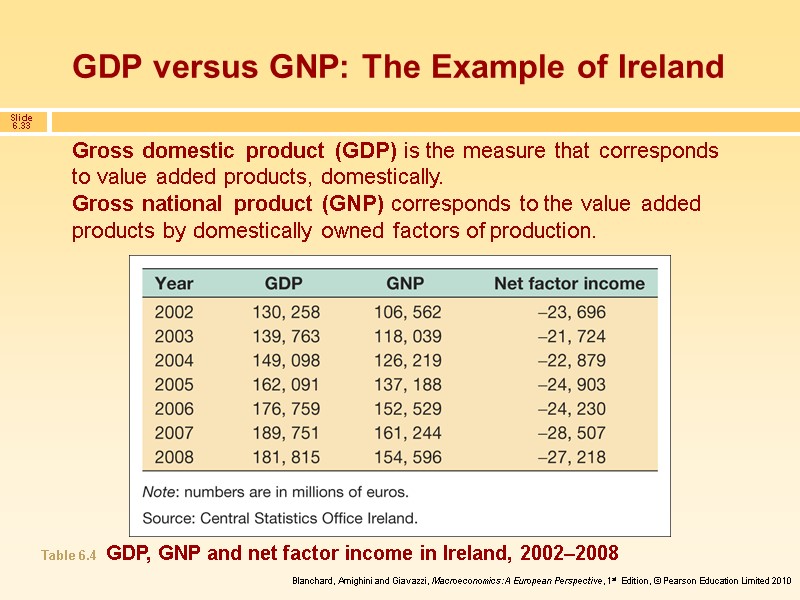
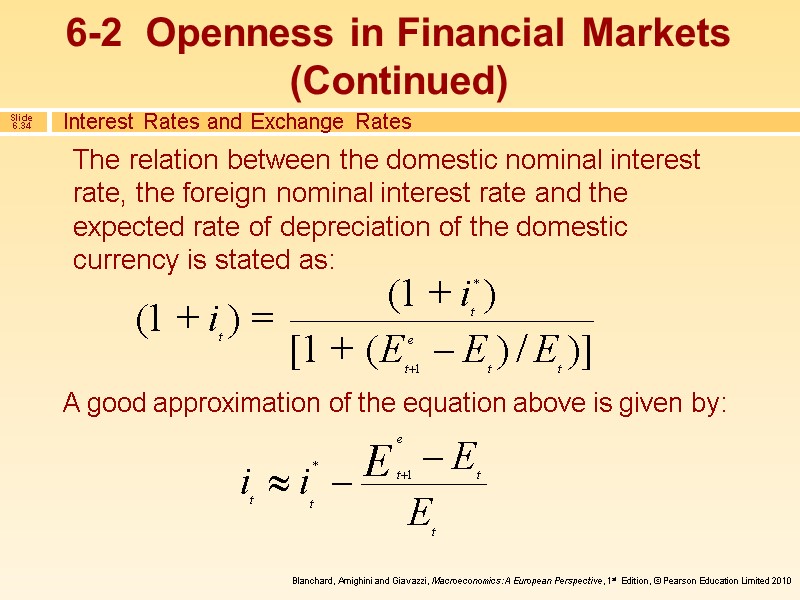
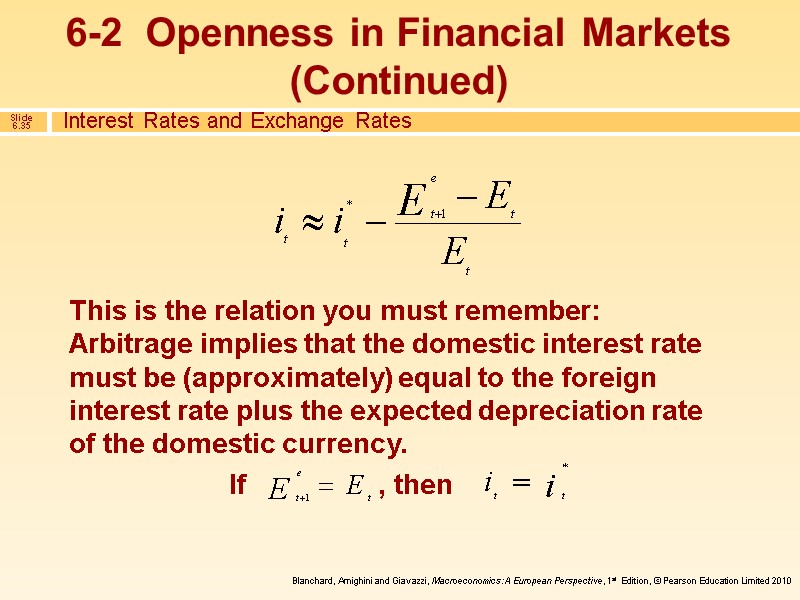
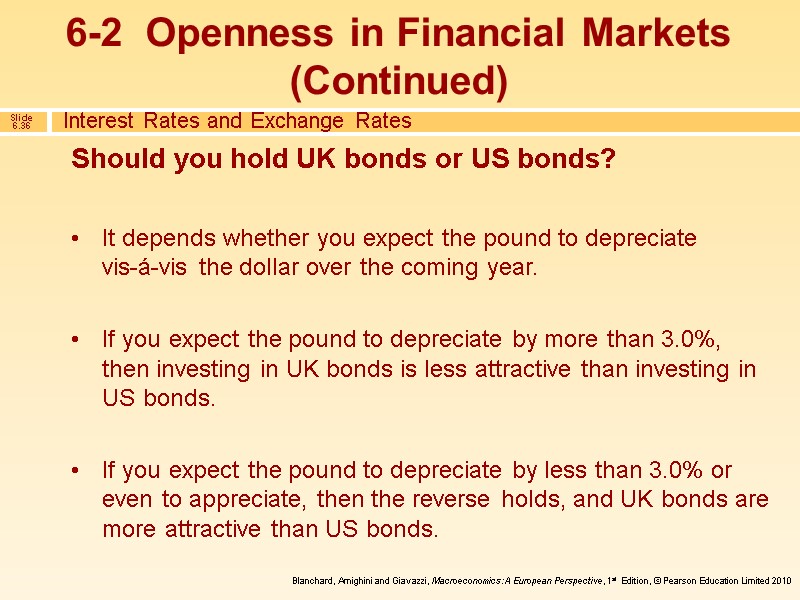
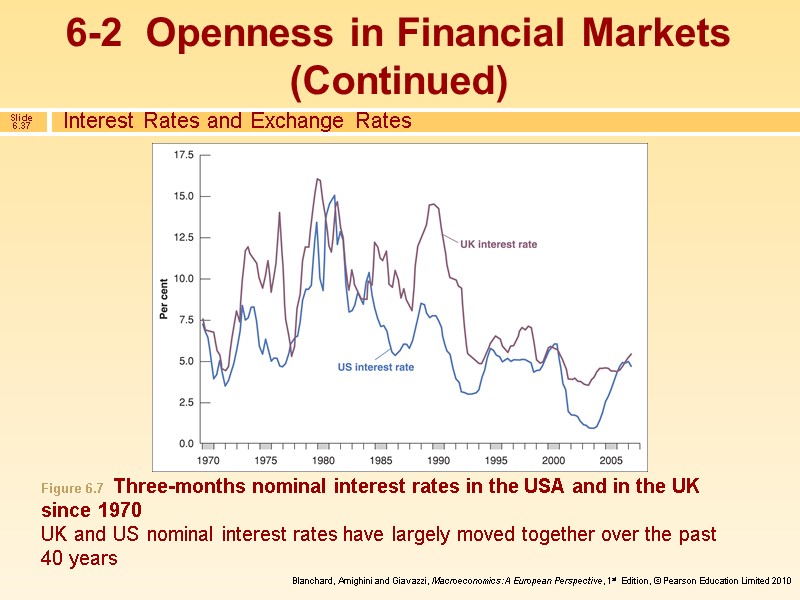
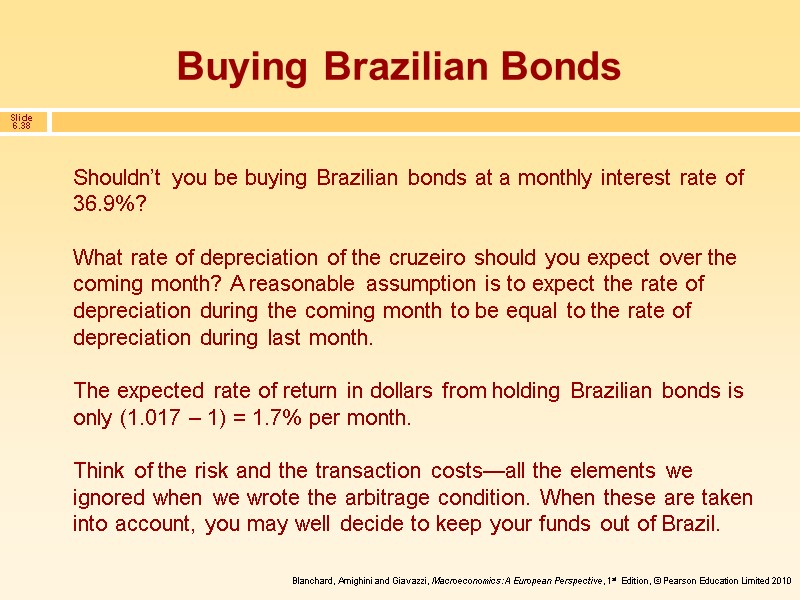
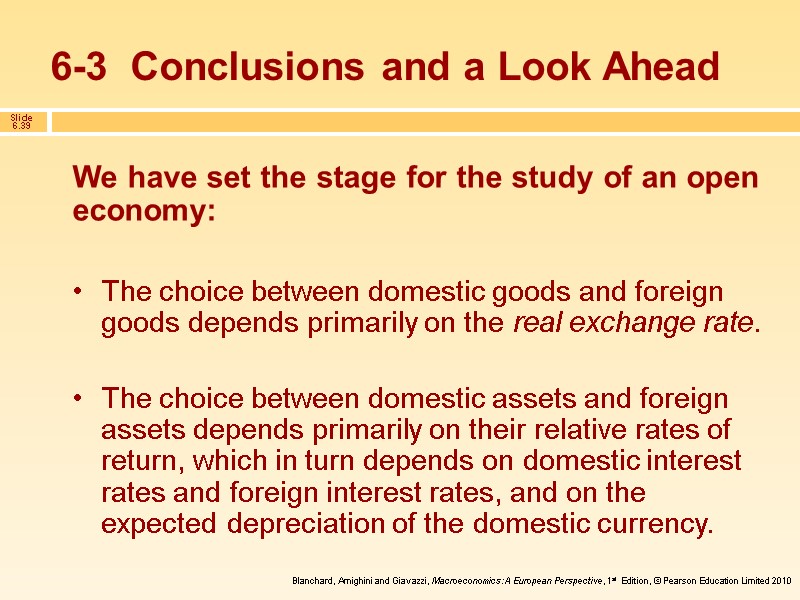
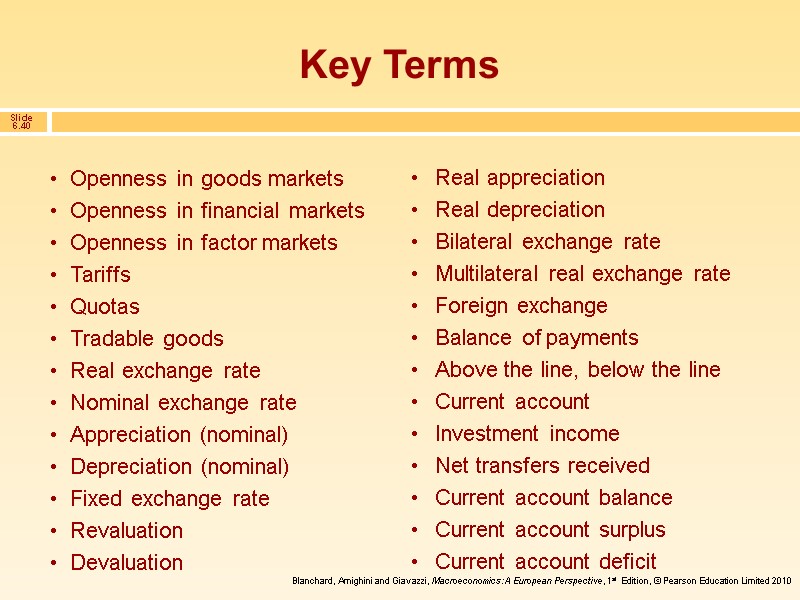
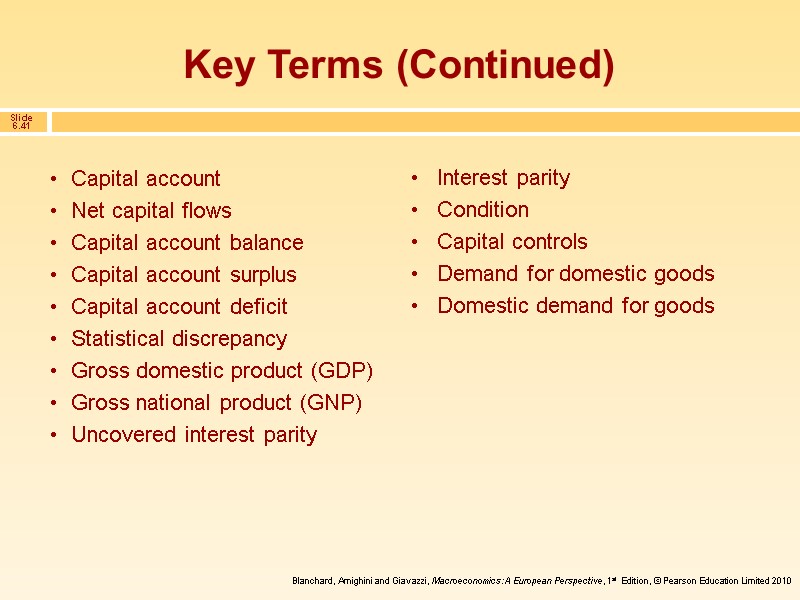
37534-blanchard__-_macroeconomics__-_chapter_6.ppt
- Количество слайдов: 41
 CHAPTER 6: THE IS-LM MODEL IN AN OPEN ECONOMY
CHAPTER 6: THE IS-LM MODEL IN AN OPEN ECONOMY
 The Is-lm Model In An Open Economy Openness has three distinct dimensions: Openness in goods markets. Free trade restrictions include tariffs and quotas. Openness in financial markets. Capital controls place restrictions on the ownership of foreign assets. Openness in factor markets. The ability of firms to choose where to locate production, and workers to choose where to work. The EU is the biggest ever common market among sovereign countries, with 27 member states.
The Is-lm Model In An Open Economy Openness has three distinct dimensions: Openness in goods markets. Free trade restrictions include tariffs and quotas. Openness in financial markets. Capital controls place restrictions on the ownership of foreign assets. Openness in factor markets. The ability of firms to choose where to locate production, and workers to choose where to work. The EU is the biggest ever common market among sovereign countries, with 27 member states.
 6-1 Openness in Goods Markets Exports and Imports Figure 6.1 UK exports and imports as ratios of GDP since 1960 Since 1948, exports and imports have increased by around 10 percentage points in relation to GDP Source: UK Office for National Statistics
6-1 Openness in Goods Markets Exports and Imports Figure 6.1 UK exports and imports as ratios of GDP since 1960 Since 1948, exports and imports have increased by around 10 percentage points in relation to GDP Source: UK Office for National Statistics
 The behaviour of exports and imports in the United Kingdom is characterised by: The UK economy has become more open over time. Exports and imports, which were around 20% of GDP in 1948 are now equal to about 30% of GDP (29% for exports, 32% for imports). Although imports and exports have broadly followed the same upward trend, they have also diverged for long periods of time, generating sustained trade surpluses and trade deficits. Exports and Imports 6-1 Openness in Goods Markets (Continued)
The behaviour of exports and imports in the United Kingdom is characterised by: The UK economy has become more open over time. Exports and imports, which were around 20% of GDP in 1948 are now equal to about 30% of GDP (29% for exports, 32% for imports). Although imports and exports have broadly followed the same upward trend, they have also diverged for long periods of time, generating sustained trade surpluses and trade deficits. Exports and Imports 6-1 Openness in Goods Markets (Continued)
 A good index of openness is the proportion of aggregate output composed of tradable goods—or goods that compete with foreign goods in either domestic or foreign markets. With exports around 26% of GDP, it is true that the UK has one of the smallest ratios of exports to GDP among the rich countries of the world. Exports and Imports 6-1 Openness in Goods Markets (Continued)
A good index of openness is the proportion of aggregate output composed of tradable goods—or goods that compete with foreign goods in either domestic or foreign markets. With exports around 26% of GDP, it is true that the UK has one of the smallest ratios of exports to GDP among the rich countries of the world. Exports and Imports 6-1 Openness in Goods Markets (Continued)
 The main factors behind differences in export ratios are geography and country size: Distance from other markets. Size also matters: The smaller the country, the more it must specialise in producing and exporting only a few products and rely on imports for other products. 6-1 Openness in Goods Markets (Continued) Exports and Imports Table 6.1 Ratios of exports to GDP for selected OECD countries, 2007
The main factors behind differences in export ratios are geography and country size: Distance from other markets. Size also matters: The smaller the country, the more it must specialise in producing and exporting only a few products and rely on imports for other products. 6-1 Openness in Goods Markets (Continued) Exports and Imports Table 6.1 Ratios of exports to GDP for selected OECD countries, 2007
 Can Exports Exceed GDP? Countries can have export ratios larger than the value of their GDP because exports and imports may include exports and imports of intermediate goods. In 2007, the ratio of exports to GDP in Singapore was 229%!
Can Exports Exceed GDP? Countries can have export ratios larger than the value of their GDP because exports and imports may include exports and imports of intermediate goods. In 2007, the ratio of exports to GDP in Singapore was 229%!
 When goods markets are open, domestic consumers must decide not only how much to consume and save but also whether to buy domestic goods or foreign goods. Central to the second decision is the price of domestic goods relative to foreign goods, or the real exchange rate. 6-1 Openness in Goods Markets (Continued) The Choice between Domestic Goods and Foreign Goods
When goods markets are open, domestic consumers must decide not only how much to consume and save but also whether to buy domestic goods or foreign goods. Central to the second decision is the price of domestic goods relative to foreign goods, or the real exchange rate. 6-1 Openness in Goods Markets (Continued) The Choice between Domestic Goods and Foreign Goods
 Nominal exchange rates between two currencies can be quoted in one of two ways: As the price of the domestic currency in terms of the foreign currency. As the price of the foreign currency in terms of the domestic currency. 6-1 Openness in Goods Markets (Continued) Nominal Exchange Rates
Nominal exchange rates between two currencies can be quoted in one of two ways: As the price of the domestic currency in terms of the foreign currency. As the price of the foreign currency in terms of the domestic currency. 6-1 Openness in Goods Markets (Continued) Nominal Exchange Rates
 The nominal exchange rate is the price of the foreign currency in terms of the domestic currency. An appreciation of the domestic currency is an increase in the price of the domestic currency in terms of the foreign currency, which corresponds to a increase in the exchange rate. A depreciation of the domestic currency is a decrease in the price of the domestic currency in terms of the foreign currency, or a decrease in the exchange rate. 6-1 Openness in Goods Markets (Continued) Nominal Exchange Rates
The nominal exchange rate is the price of the foreign currency in terms of the domestic currency. An appreciation of the domestic currency is an increase in the price of the domestic currency in terms of the foreign currency, which corresponds to a increase in the exchange rate. A depreciation of the domestic currency is a decrease in the price of the domestic currency in terms of the foreign currency, or a decrease in the exchange rate. 6-1 Openness in Goods Markets (Continued) Nominal Exchange Rates
 When countries operate under fixed exchange rates, that is, maintain a constant exchange rate between them, two other terms used are: Revaluations, rather than appreciations, which are decreases in the exchange rate, and Devaluations, rather than depreciations, which are increases in the exchange rate. Nominal Exchange Rates 6-1 Openness in Goods Markets (Continued)
When countries operate under fixed exchange rates, that is, maintain a constant exchange rate between them, two other terms used are: Revaluations, rather than appreciations, which are decreases in the exchange rate, and Devaluations, rather than depreciations, which are increases in the exchange rate. Nominal Exchange Rates 6-1 Openness in Goods Markets (Continued)
 Nominal Exchange Rates 6-1 Openness in Goods Markets (Continued) Figure 6.2 The nominal exchange rate between the British pound and the euro since 1999 Source: European Central Bank
Nominal Exchange Rates 6-1 Openness in Goods Markets (Continued) Figure 6.2 The nominal exchange rate between the British pound and the euro since 1999 Source: European Central Bank
 Note the two main characteristics of the figure: The trend decrease in the exchange rate –there was a depreciation of the pound vis-à-vis the euro over the period. The large fluctuations in the exchange rate – there was a very large appreciation of the pound at the end of the 1990s, followed by a large depreciation in the following decade. Nominal Exchange Rates 6-1 Openness in Goods Markets (Continued)
Note the two main characteristics of the figure: The trend decrease in the exchange rate –there was a depreciation of the pound vis-à-vis the euro over the period. The large fluctuations in the exchange rate – there was a very large appreciation of the pound at the end of the 1990s, followed by a large depreciation in the following decade. Nominal Exchange Rates 6-1 Openness in Goods Markets (Continued)
 Let’s look at the real exchange rate between Germany and the UK. If the price of a Mercedes in Germany is € 50,000 and a euro is worth 1.15 pounds, then the price of a Mercedes in pounds is € 50,000 X 1.15 = £43,000. If the price of a Jaguar in the UK is £30,000, then the price of a Mercedes in terms of Jaguars would be £43,000/ £30,000 = 1.4. To generalise this example to all of the goods in the economy, we use a price index for the economy, or the GDP deflator. From Nominal to Real Exchange Rates 6-1 Openness in Goods Markets (Continued)
Let’s look at the real exchange rate between Germany and the UK. If the price of a Mercedes in Germany is € 50,000 and a euro is worth 1.15 pounds, then the price of a Mercedes in pounds is € 50,000 X 1.15 = £43,000. If the price of a Jaguar in the UK is £30,000, then the price of a Mercedes in terms of Jaguars would be £43,000/ £30,000 = 1.4. To generalise this example to all of the goods in the economy, we use a price index for the economy, or the GDP deflator. From Nominal to Real Exchange Rates 6-1 Openness in Goods Markets (Continued)
 P = price of UK goods in pounds P* = price of European goods in euros From Nominal to Real Exchange Rates 6-1 Openness in Goods Markets (Continued) Figure 6.3 The construction of the real exchange rate
P = price of UK goods in pounds P* = price of European goods in euros From Nominal to Real Exchange Rates 6-1 Openness in Goods Markets (Continued) Figure 6.3 The construction of the real exchange rate
 Like nominal exchange rates, real exchange rates move over time: An increase in the relative price of domestic goods in terms of foreign goods is called a real appreciation, which corresponds to a decrease in the real exchange rate, . A decrease in the relative price of domestic goods in terms of foreign goods is called a real depreciation, which corresponds to an increase in the real exchange rate, . From Nominal to Real Exchange Rates 6-1 Openness in Goods Markets (Continued)
Like nominal exchange rates, real exchange rates move over time: An increase in the relative price of domestic goods in terms of foreign goods is called a real appreciation, which corresponds to a decrease in the real exchange rate, . A decrease in the relative price of domestic goods in terms of foreign goods is called a real depreciation, which corresponds to an increase in the real exchange rate, . From Nominal to Real Exchange Rates 6-1 Openness in Goods Markets (Continued)
 From Nominal to Real Exchange Rates 6-1 Openness in Goods Markets (Continued) Figure 6.4 Real and nominal exchange rates in the UK since 1999 The nominal and the real exchange rates in the UK have moved largely together since 1999 Source: ECB, Eurostat, Bank of England
From Nominal to Real Exchange Rates 6-1 Openness in Goods Markets (Continued) Figure 6.4 Real and nominal exchange rates in the UK since 1999 The nominal and the real exchange rates in the UK have moved largely together since 1999 Source: ECB, Eurostat, Bank of England
 From Nominal to Real Exchange Rates Note the two main characteristics of Figure 6.4: The large nominal and real appreciation of the pound at the end of the 1990s and the collapse of the pound in 2008–2009. The large fluctuations in the nominal exchange rate also show up in the real exchange rate. 6-1 Openness in Goods Markets (Continued)
From Nominal to Real Exchange Rates Note the two main characteristics of Figure 6.4: The large nominal and real appreciation of the pound at the end of the 1990s and the collapse of the pound in 2008–2009. The large fluctuations in the nominal exchange rate also show up in the real exchange rate. 6-1 Openness in Goods Markets (Continued)
 Since 1999, the nominal exchange rate and the real exchange rate have moved nearly together. This reflects the fact that, since then, inflation rates have been very similar– and low–in both areas. From Nominal to Real Exchange Rates 6-1 Openness in Goods Markets (Continued)
Since 1999, the nominal exchange rate and the real exchange rate have moved nearly together. This reflects the fact that, since then, inflation rates have been very similar– and low–in both areas. From Nominal to Real Exchange Rates 6-1 Openness in Goods Markets (Continued)
 From Bilateral to Multilateral Exchange Rates 6-1 Openness in Goods Markets (Continued) Table 6.2 The country composition of UK exports and imports, 2008
From Bilateral to Multilateral Exchange Rates 6-1 Openness in Goods Markets (Continued) Table 6.2 The country composition of UK exports and imports, 2008
 Bilateral exchange rates are exchange rates between two countries. Multilateral exchange rates are exchange rates between several countries. For example, to measure the average price of UK goods relative to the average price of goods of UK trading partners, we use the UK share of import and export trade with each country as the weight for that country, or the multilateral real UK exchange rate. From Bilateral to Multilateral Exchange Rates 6-1 Openness in Goods Markets (Continued)
Bilateral exchange rates are exchange rates between two countries. Multilateral exchange rates are exchange rates between several countries. For example, to measure the average price of UK goods relative to the average price of goods of UK trading partners, we use the UK share of import and export trade with each country as the weight for that country, or the multilateral real UK exchange rate. From Bilateral to Multilateral Exchange Rates 6-1 Openness in Goods Markets (Continued)
 Equivalent names for the relative price of foreign goods vis-á-vis UK goods are: The real multilateral UK exchange rate. The UK trade-weighted real exchange rate. The UK effective real exchange rate. From Bilateral to Multilateral Exchange Rates 6-1 Openness in Goods Markets (Continued)
Equivalent names for the relative price of foreign goods vis-á-vis UK goods are: The real multilateral UK exchange rate. The UK trade-weighted real exchange rate. The UK effective real exchange rate. From Bilateral to Multilateral Exchange Rates 6-1 Openness in Goods Markets (Continued)
 From Bilateral to Multilateral Exchange Rates Figure 6.5 The UK multilateral real exchange rate since 19803 The 1980s and 1990s were characterised by large swings in the real exchange rate. The real exchange rate was much more stable since the end of the 1990s, until the large real depreciation in 2009 Source: Bank of England 6-1 Openness in Goods Markets (Continued)
From Bilateral to Multilateral Exchange Rates Figure 6.5 The UK multilateral real exchange rate since 19803 The 1980s and 1990s were characterised by large swings in the real exchange rate. The real exchange rate was much more stable since the end of the 1990s, until the large real depreciation in 2009 Source: Bank of England 6-1 Openness in Goods Markets (Continued)
 The purchase and sale of foreign assets implies buying or selling foreign currency—sometimes called foreign exchange. Openness in financial markets allows: Financial investors to diversify—to hold both domestic and foreign assets and speculate on foreign interest rate movements. Allows countries to run trade surpluses and deficits. A country that buys more than it sells must pay for the difference by borrowing from the rest of the world. 6-2 Openness in Financial Markets
The purchase and sale of foreign assets implies buying or selling foreign currency—sometimes called foreign exchange. Openness in financial markets allows: Financial investors to diversify—to hold both domestic and foreign assets and speculate on foreign interest rate movements. Allows countries to run trade surpluses and deficits. A country that buys more than it sells must pay for the difference by borrowing from the rest of the world. 6-2 Openness in Financial Markets
 The balance of payments account summarises a country’s transactions with the rest of the world. Transactions above the line are current account transactions. Transactions below the line are capital account transactions. The current account balance and the capital account balance should be equal, but because of data gathering errors they aren’t. For this reason, the account shows a statistical discrepancy. The Balance of Payments 6-2 Openness in Financial Markets (Continued)
The balance of payments account summarises a country’s transactions with the rest of the world. Transactions above the line are current account transactions. Transactions below the line are capital account transactions. The current account balance and the capital account balance should be equal, but because of data gathering errors they aren’t. For this reason, the account shows a statistical discrepancy. The Balance of Payments 6-2 Openness in Financial Markets (Continued)
 6-2 Openness in Financial Markets (Continued) Table 6.3 The UK balance of payments, 2008 (in billions of pounds) The Balance of Payments
6-2 Openness in Financial Markets (Continued) Table 6.3 The UK balance of payments, 2008 (in billions of pounds) The Balance of Payments
 The transactions above the line record payments to and from the rest of the world are called current account transactions: The first two lines record the exports and imports of goods and services. UK residents receive investment income on their holdings of foreign assets and vice versa. Countries give and receive foreign aid; the net value is recorded as net transfers received. The Current Account 6-2 Openness in Financial Markets (Continued) The Balance of Payments
The transactions above the line record payments to and from the rest of the world are called current account transactions: The first two lines record the exports and imports of goods and services. UK residents receive investment income on their holdings of foreign assets and vice versa. Countries give and receive foreign aid; the net value is recorded as net transfers received. The Current Account 6-2 Openness in Financial Markets (Continued) The Balance of Payments
 The sum of net payments in the current account balance can be positive, in which case the country has a current account surplus, or negative—a current account deficit. The Current Account 6-2 Openness in Financial Markets (Continued) The Balance of Payments
The sum of net payments in the current account balance can be positive, in which case the country has a current account surplus, or negative—a current account deficit. The Current Account 6-2 Openness in Financial Markets (Continued) The Balance of Payments
 Transactions below the line are called capital account transactions. The capital account balance, also known as net capital flows, can be positive (negative) if foreign holdings of US assets are greater (less) than US holdings of foreign assets, in which case there is a capital account surplus (deficit). Negative net capital flows are called a capital account deficit. The numbers for current and capital account transactions are constructed using different sources; although they should give the same answers, they typically do not. The difference between the two is called the statistical discrepancy. The Balance of Payments The Capital Account 6-2 Openness in Financial Markets (Continued)
Transactions below the line are called capital account transactions. The capital account balance, also known as net capital flows, can be positive (negative) if foreign holdings of US assets are greater (less) than US holdings of foreign assets, in which case there is a capital account surplus (deficit). Negative net capital flows are called a capital account deficit. The numbers for current and capital account transactions are constructed using different sources; although they should give the same answers, they typically do not. The difference between the two is called the statistical discrepancy. The Balance of Payments The Capital Account 6-2 Openness in Financial Markets (Continued)
 The decision or whether to invest abroad or at home depends not only on interest rate differences but also on your expectation of what will happen to the nominal exchange rate. The Choice between Domestic and Foreign Assets 6-2 Openness in Financial Markets (Continued) Figure 6.6 Expected returns from holding one-year UK bonds or one-year US bonds
The decision or whether to invest abroad or at home depends not only on interest rate differences but also on your expectation of what will happen to the nominal exchange rate. The Choice between Domestic and Foreign Assets 6-2 Openness in Financial Markets (Continued) Figure 6.6 Expected returns from holding one-year UK bonds or one-year US bonds
 If both UK bonds and EU bonds are to be held, they must have the same expected rate of return, so that the following arbitrage relation must hold: Rearranging the equation, we obtain the uncovered interest parity relation, or interest parity condition: The Choice between Domestic and Foreign Assets 6-2 Openness in Financial Markets (Continued)
If both UK bonds and EU bonds are to be held, they must have the same expected rate of return, so that the following arbitrage relation must hold: Rearranging the equation, we obtain the uncovered interest parity relation, or interest parity condition: The Choice between Domestic and Foreign Assets 6-2 Openness in Financial Markets (Continued)
 The assumption that financial investors will hold only the bonds with the highest expected rate of return is obviously too strong, for two reasons: It ignores transaction costs. It ignores risk. The Choice between Domestic and Foreign Assets 6-2 Openness in Financial Markets (Continued)
The assumption that financial investors will hold only the bonds with the highest expected rate of return is obviously too strong, for two reasons: It ignores transaction costs. It ignores risk. The Choice between Domestic and Foreign Assets 6-2 Openness in Financial Markets (Continued)
 GDP versus GNP: The Example of Ireland Gross domestic product (GDP) is the measure that corresponds to value added products, domestically. Gross national product (GNP) corresponds to the value added products by domestically owned factors of production. Table 6.4 GDP, GNP and net factor income in Ireland, 2002–2008
GDP versus GNP: The Example of Ireland Gross domestic product (GDP) is the measure that corresponds to value added products, domestically. Gross national product (GNP) corresponds to the value added products by domestically owned factors of production. Table 6.4 GDP, GNP and net factor income in Ireland, 2002–2008
 The relation between the domestic nominal interest rate, the foreign nominal interest rate and the expected rate of depreciation of the domestic currency is stated as: A good approximation of the equation above is given by: Interest Rates and Exchange Rates 6-2 Openness in Financial Markets (Continued)
The relation between the domestic nominal interest rate, the foreign nominal interest rate and the expected rate of depreciation of the domestic currency is stated as: A good approximation of the equation above is given by: Interest Rates and Exchange Rates 6-2 Openness in Financial Markets (Continued)
 This is the relation you must remember: Arbitrage implies that the domestic interest rate must be (approximately) equal to the foreign interest rate plus the expected depreciation rate of the domestic currency. If , then Interest Rates and Exchange Rates 6-2 Openness in Financial Markets (Continued)
This is the relation you must remember: Arbitrage implies that the domestic interest rate must be (approximately) equal to the foreign interest rate plus the expected depreciation rate of the domestic currency. If , then Interest Rates and Exchange Rates 6-2 Openness in Financial Markets (Continued)
 Should you hold UK bonds or US bonds? It depends whether you expect the pound to depreciate vis-á-vis the dollar over the coming year. If you expect the pound to depreciate by more than 3.0%, then investing in UK bonds is less attractive than investing in US bonds. If you expect the pound to depreciate by less than 3.0% or even to appreciate, then the reverse holds, and UK bonds are more attractive than US bonds. Interest Rates and Exchange Rates 6-2 Openness in Financial Markets (Continued)
Should you hold UK bonds or US bonds? It depends whether you expect the pound to depreciate vis-á-vis the dollar over the coming year. If you expect the pound to depreciate by more than 3.0%, then investing in UK bonds is less attractive than investing in US bonds. If you expect the pound to depreciate by less than 3.0% or even to appreciate, then the reverse holds, and UK bonds are more attractive than US bonds. Interest Rates and Exchange Rates 6-2 Openness in Financial Markets (Continued)
 Interest Rates and Exchange Rates 6-2 Openness in Financial Markets (Continued) Figure 6.7 Three-months nominal interest rates in the USA and in the UK since 1970 UK and US nominal interest rates have largely moved together over the past 40 years
Interest Rates and Exchange Rates 6-2 Openness in Financial Markets (Continued) Figure 6.7 Three-months nominal interest rates in the USA and in the UK since 1970 UK and US nominal interest rates have largely moved together over the past 40 years
 Buying Brazilian Bonds Shouldn’t you be buying Brazilian bonds at a monthly interest rate of 36.9%? What rate of depreciation of the cruzeiro should you expect over the coming month? A reasonable assumption is to expect the rate of depreciation during the coming month to be equal to the rate of depreciation during last month. The expected rate of return in dollars from holding Brazilian bonds is only (1.017 – 1) = 1.7% per month. Think of the risk and the transaction costs—all the elements we ignored when we wrote the arbitrage condition. When these are taken into account, you may well decide to keep your funds out of Brazil.
Buying Brazilian Bonds Shouldn’t you be buying Brazilian bonds at a monthly interest rate of 36.9%? What rate of depreciation of the cruzeiro should you expect over the coming month? A reasonable assumption is to expect the rate of depreciation during the coming month to be equal to the rate of depreciation during last month. The expected rate of return in dollars from holding Brazilian bonds is only (1.017 – 1) = 1.7% per month. Think of the risk and the transaction costs—all the elements we ignored when we wrote the arbitrage condition. When these are taken into account, you may well decide to keep your funds out of Brazil.
 We have set the stage for the study of an open economy: The choice between domestic goods and foreign goods depends primarily on the real exchange rate. The choice between domestic assets and foreign assets depends primarily on their relative rates of return, which in turn depends on domestic interest rates and foreign interest rates, and on the expected depreciation of the domestic currency. 6-3 Conclusions and a Look Ahead
We have set the stage for the study of an open economy: The choice between domestic goods and foreign goods depends primarily on the real exchange rate. The choice between domestic assets and foreign assets depends primarily on their relative rates of return, which in turn depends on domestic interest rates and foreign interest rates, and on the expected depreciation of the domestic currency. 6-3 Conclusions and a Look Ahead
 Key Terms Openness in goods markets Openness in financial markets Openness in factor markets Tariffs Quotas Tradable goods Real exchange rate Nominal exchange rate Appreciation (nominal) Depreciation (nominal) Fixed exchange rate Revaluation Devaluation Real appreciation Real depreciation Bilateral exchange rate Multilateral real exchange rate Foreign exchange Balance of payments Above the line, below the line Current account Investment income Net transfers received Current account balance Current account surplus Current account deficit
Key Terms Openness in goods markets Openness in financial markets Openness in factor markets Tariffs Quotas Tradable goods Real exchange rate Nominal exchange rate Appreciation (nominal) Depreciation (nominal) Fixed exchange rate Revaluation Devaluation Real appreciation Real depreciation Bilateral exchange rate Multilateral real exchange rate Foreign exchange Balance of payments Above the line, below the line Current account Investment income Net transfers received Current account balance Current account surplus Current account deficit
 Key Terms (Continued) Capital account Net capital flows Capital account balance Capital account surplus Capital account deficit Statistical discrepancy Gross domestic product (GDP) Gross national product (GNP) Uncovered interest parity Interest parity Condition Capital controls Demand for domestic goods Domestic demand for goods
Key Terms (Continued) Capital account Net capital flows Capital account balance Capital account surplus Capital account deficit Statistical discrepancy Gross domestic product (GDP) Gross national product (GNP) Uncovered interest parity Interest parity Condition Capital controls Demand for domestic goods Domestic demand for goods
